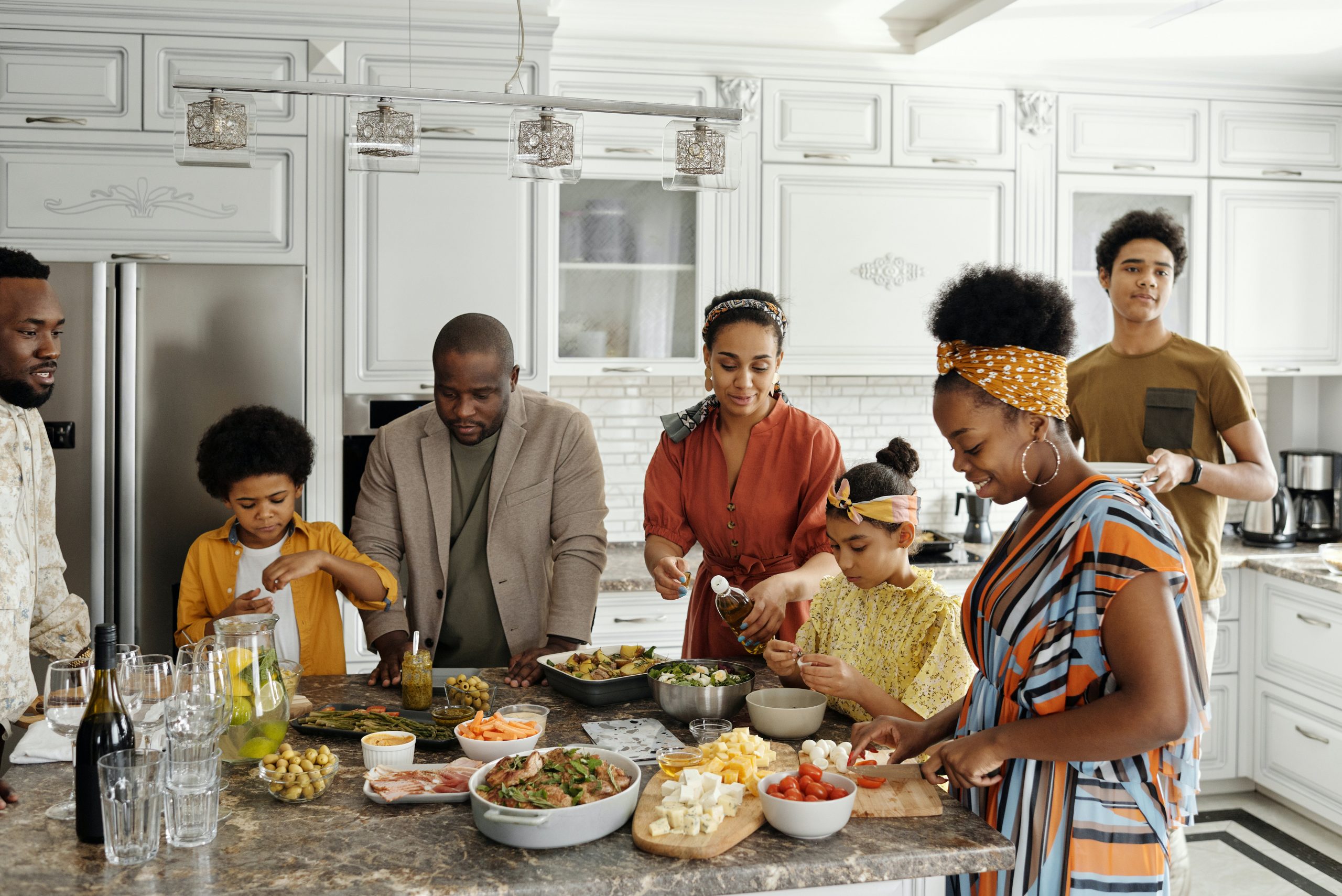Ever since I was little, I have LOVED eating dinner with my entire family at the dinner table. There is just something about everyone being busy all day long and ending the day together that just makes me so happy. So let’s tie in this week’s blog post about parallel-talk and self-talk into your nightly dinner routine. If you didn’t get a chance to read the blog post, you can check it out here.
Involve the Family
My biggest recommendation would be for the entire family to sit and have the meal together. By doing so, you are giving your child an opportunity to observe and listen to conversation. When they are able to hear the language associated with this daily routine (ex: name of the meal, utensils needed, if something tastes good, etc.) they can feel empowered to imitate others.

Use the Self-Talk Strategy
Remember, self-talk means narrating what you are doing. Before dinner starts, you can narrate what you are doing as you set the table. For example, “First I’m going to put the plates on the table, then I’ll give everyone a fork and a knife. Once this is finished it’ll be time to eat!”
You can also address imitating sounds and identifying objects/food. Meaning, when you take a bite of food you can say “mmmm!” or “yummy!” Point to different foods on your plate and see if your child can find the same food on their plate (“Hmm do I want to take a bite of chicken or broccoli?”).
Use the Parallel-Talk Strategy
The second strategy we discussed on the blog this week was parallel-talk, which means narrating what your child is doing. Throughout the meal, make a few points about what they are eating/seeing/feeling/etc. For example, “wow, that was such a big bite of spaghetti!”
You can also practice the examples I listed in the self-talk section. When you see your child take a bite of food model the sound/word “mmmm/yummy!”
What does your dinner routine look like? I would love to know! Comment below or send a message straight to my inbox!



